Chemical formula : 70–75% SiO2, plus MgO, Fe3O4
(composed mainly of silicon dioxide)
Crystal system: amorphous
Density: 2.25 to 2.40
Hardness (Mohs scale): 5 to 5.5
Refractive index: 1.480 to 1.500
birefringence: null
optical character: isotropic
scatter: 10
Color: gray, dark green, black.

Heavenly or Rainbow Eye Obsidian, Davis Creek, California
Obsidian is a vitreous volcanic rock, from the family of Rhyolites , forming when acidic lava (unlike basic lava) rich in silica containing very little water (- 3%) solidifies. Obsidian is formed by a cooling of magmatic lava rich in gas but too viscous for them to escape and thus remain trapped in the rock.
There are also Obsidian which are Trachytic (predominance of alkali feldspar), Andesitic (Black eruptive rock composed of Andesine) Phonolites (fluid microlithic structure).
At the time of its exit from the volcano, it undergoes a cooling freezing the mechanisms of crystallization. A frozen piece of lava.
Obsidian is very often interpreted as lava having undergone very rapid cooling and is then compared to the frozen edges of dykes or cushion lava. If the vitreous structure is the common point between the basic frozen borders and the acid obsidians, the causes and the extent of this structure are totally different. Most importantly, obsidians are not rapidly cooled castings.

obsidian casting , Landmannlaugar, Island © Claire König
Atoms are unable to organize themselves into crystalline structures. The result is volcanic glass with a smooth uniform texture. Due to the lack of crystal structure, obsidian has sharp edges and extremely thin blades.
Unlike basaltic glasses (vitrification of a border from a few millimeters to a few centimeters following a quenching phenomenon), obsidians are vitreous in the mass, sometimes over several dozen meters. In the case of obsidians, the vitreous state cannot therefore result from rapid cooling, but means that crystallization (i.e. germination and crystal growth) has been inhibited.
Like glass, chemically unstable, obsidians tend to crystallize over time. it starts at different places, and at these places the crystallization forms white or gray clusters where the cristobalite crystallizes into the obsidian. Because of this relatively slow phenomenon, they are most often dated to the Pliocene (2 to 4 million years); none predate the Cenozoic because of this crystallization.
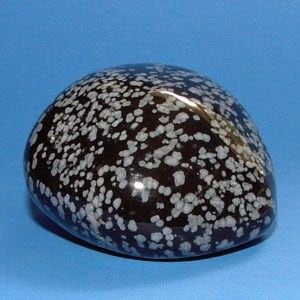
"Snowflake" Obsidian with Recrystallization Orbicles
Causes of Colors and Different Types of Obsidian:
due to its richness in magnesium and iron, black is the most common color of obsidian. However, it can also be Gray, black, green, brown, red It happens that two colors of obsidian mix together in a single specimen. The most common color combination is black and brown which is called "Mahogany Obsidian". The color difference occurs due to changes in impurities and in the oxidation state of chemical elements. It is a dark colored stone. The surface of this gemstone is made up of striated patterns, patches, spots, inclusions or bands of color. These various modes are created naturally during the formation of the stone. Obsidian can also have an iridescent or metallic appearance caused by the light reflection of tiny inclusions of mineral crystals, rock debris or gas.
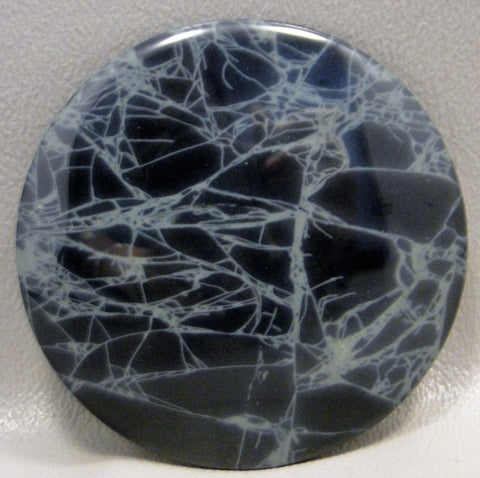
Obsidian called "cobweb" or spider.
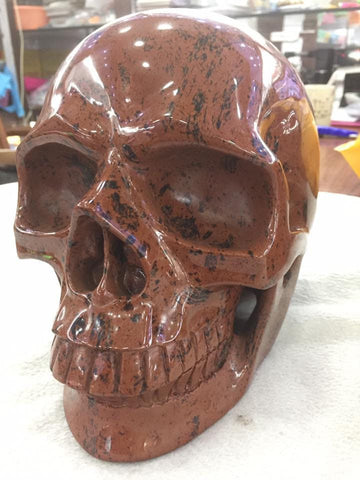
Mahogany Obsidian Skull
History :
its name comes, according to Pliny the Elder, from Obsius , Roman who would have first reported the presence of this rock, in Ethiopia, but linguists link this name to Latin obsidio , "circled" (the breaks in the obsidian showing rings).
Obsidian breaks into very sharp shards, making it a formidable weapon: prehistoric men used it as a raw material to make their weapons, tools and decorative objects.
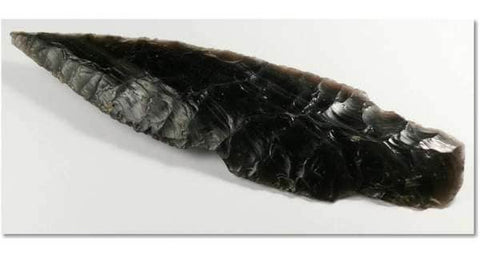
Pre-Columbian obsidian point.
Of an amorphous structure, obsidian is easily carvable, breaking in a predictable and controlled way by conchoidal fractures. This favored its use throughout Mesoamerica, but also in southern Europe in the Neolithic period, but also in East Africa on the shores of the Gulf of Winam where obsidian tools have been found in sites archaeological sites dating from the sixth millennium BC. AD and the third millennium BC. AD, chemical analyzes have revealed that the obsidian used comes from deposits located near Lake Naivasha or Lake Bogoria more than 150 km from the Gulf of Winam.

Obsidian routes in prehistoric Europe.
Gitology:
Mexico/Mezoamerica
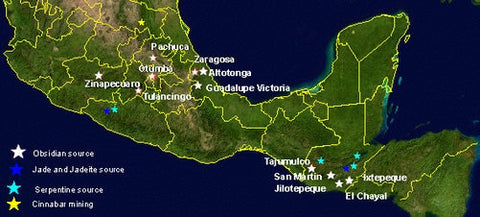
Obsidian sources in Mesoamerica are limited in number and distribution. They are confined to the regions of the Neovolcanic Cordillera, Sierra Madre Oriental and Sierra Madre de Chiapas in central Mexico and Guatemala. These resources are however very abundant in archaeological assemblages and their origin can be traced by their physical and geological properties.
Zaragoza (including the Zaragoza and Altotonga quarries), in the southern lowlands of the Gulf of Mexico)
Orizaba (including the headwaters of Orizaba Peak, Guadalupe Victoria, and Derrumbadas), in the southern lowlands of the Gulf of Mexico
· Paredon (sources of Paredon and Santa Elenas), location in Chiapas
Otumba (Otumba and Malpais), in the central highlands of Mexico
Tulancingo (Tualcingo and Tepalcingo), in the central highlands of Mexico
· Pachuca (several quarries), in the highlands of central Mexico;
Zacualtipan in the central highlands of Mexico
· Ucareo (Ucaero er Zinapuecaro ) the most important spring in western Mexico (in Michoacan).
· The Guatemalan region which includes springs located in the highlands of Guatemala. Tajumulco, El Chayal, Ixtepeque and San Martin Jilotepeque are the known springs in Guatemala and are commonly mined in pre-Columbian Mesoamerica. In fact, most obsidian found in Maya and Olmec sites originated from these sources.
The springs in the Valley of Mexico, which fell under the control of Teotihucan during the Early Classic, are those of Pachuca, Otumba and Chicoloapan.
Obsidian from Pachuca is notable for its translucent green color and its purity, which makes it one of the sources of quality obsidian in Mesoamerica. It was highly sought after and widely traded. Green obsidian is also found in the Tulancingo area, but it differs from that of Pachuca due to its internal opacity (it is milkier or darker green).
Peru:
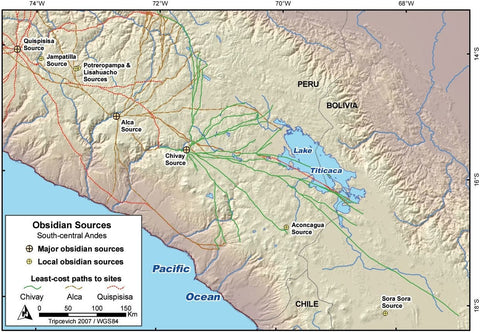
North America
From Mount Garibaldi in Canada to Lassen Peak in California, with an extension towards the San Andreas Fault
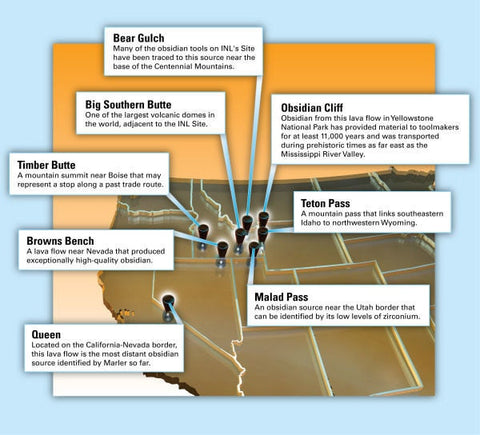
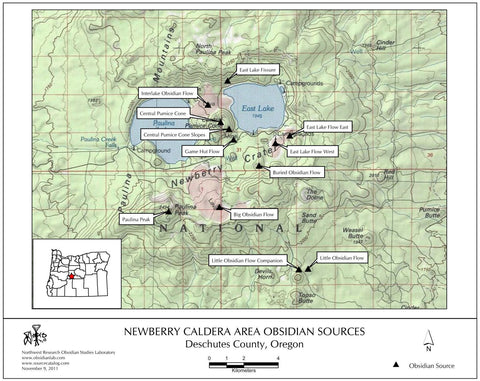
· Armenia , between Lake Sevan and Yerevan;
· Turkey , at the foot of Mount Ararat, where translucent obsidian is found; · on the island of Milos south of the Aegean Sea.
on the island of Gyali off Nissiros in Greece
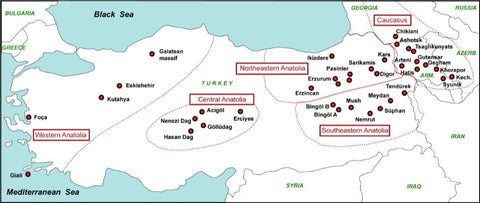
· in the Canary Islands on the island of Tenerife north face of Teide (" Los huevos del Teide " — "The eggs of Teide" — are composed of huge ovoid masses of almost pure obsidian)
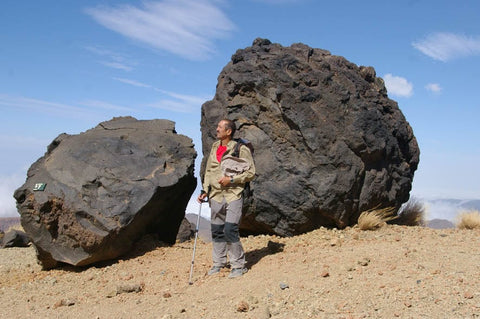
Landmannalaugar (Iceland)
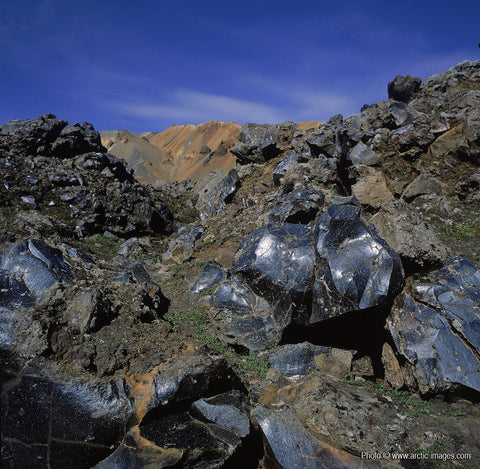
· Kenya , in the Great Rift Valley;
· Japan .
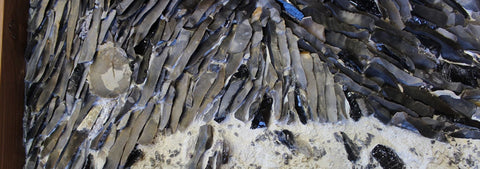
Imitation and counterfeits.
Since obsidian is a natural volcanic glass, it is easy to produce counterfeit glass. In addition, the existence of bubbles existing both in obsidian and glass makes the expertise quite difficult. Many online stores offering low-cost obsidians only sell counterfeits. Some coarse others more subtle.
One way to detect a false obsidian is to apply a powerful gemological torch, then to appreciate the reflections by transparency thanks to the backlight. A true obsidian will have a more or less pronounced khaki green color with the possible appearance of inclusion. A fake, meanwhile, will have bright red reflections, very artificial bright blue.
In addition, a density test may be effective (but not always)
The density of natural obsidian being 2.25 to 2.40 of artificial glass 2.60 to 4.50.
Some very frequently encountered coarse fake obsidians
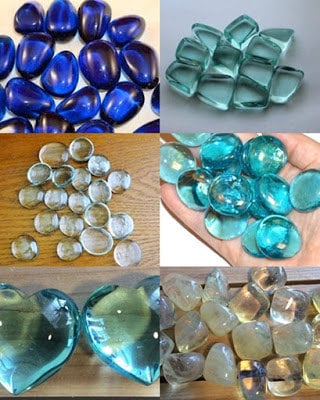
Excellent for lining the bottom of an aquarium
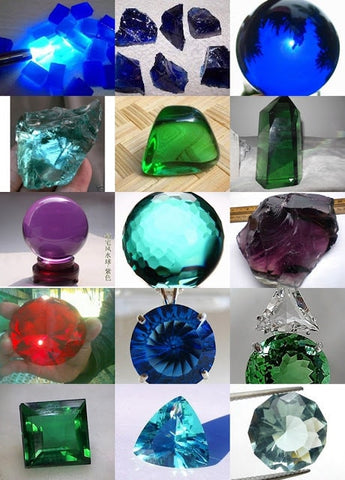
It's best just to laugh.
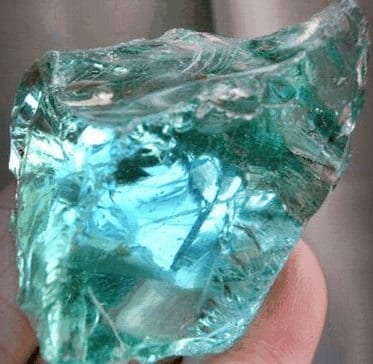
Blue obsidian very frequently encountered at trade fairs. Say "Andara"
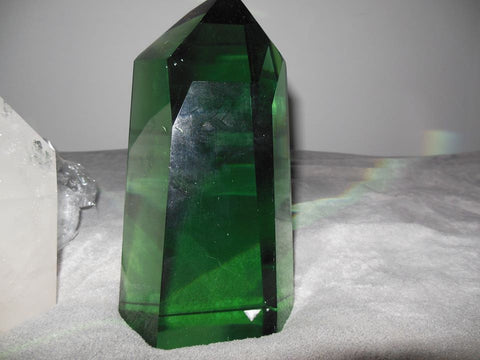
A must, knowing that obsidian has an amorphous structure. Piece of glass cut like a quartz (hat the artist!)
Some obsidians:
Golden or silver obsidian:
These obsidians contain small bubbles that create a gold or silver colored reflectance. It occurs when hot lava flows enter water. Very small inclusions of water vapor form micro bubbles of air or gas which freeze as the lava cools. It is these micro bubbles which subsequently cause the reflectance of the shiny gold or silver.
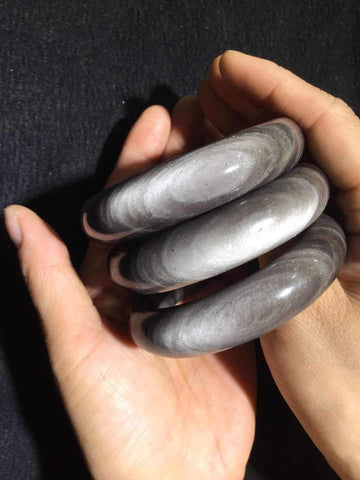
Silver
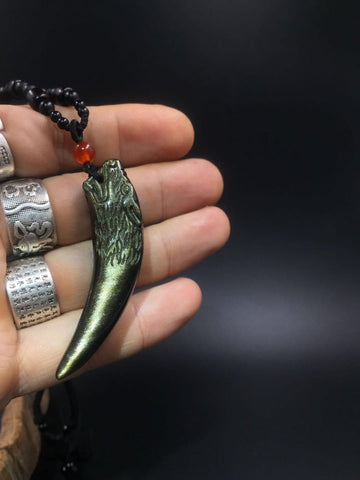
Golden
Celestial Eye Obsidian:
When microscopic crystals of feldspar or mica are formed along the lava flow and included in the obsidian in lamellar form, the light, penetrating in turn two different materials, the obsidian and the feldspar, produces an interference giving this so-called non-spectral color scheme.
A beam of light of wavelength λ arrives at an ordered matter characterized by the periodic repetition of atomic planes a length apart d . The beam arriving on a first plane of atoms is partly reflected by them, while another part continues its journey in a straight line. The beam passing through the first plane can also reflect partly on the next plane of atoms, separated from the first plane of reflection by the distance d , and so on...
We are interested in the reflected beam, resulting from the superposition of the waves reflected on the different successive planes. The wave which is reflected on one plane of an atom travels less distance than that which is reflected on the following plane. Whether θ is the angle of incidence, a geometric analysis shows that the path difference between the two beams is: 2×d×sin θ .
This is where the wave character of light comes in. When several waves meet at the same point in space, they give rise to the phenomenon of interference. In particular, to observe a maximum of light (intense light spot) the path difference between these waves must be an integer multiple of the wavelength. Thus, they are all in phase and sum each other constructively. The condition for obtaining a maximum intensity is therefore written: 2 × d × sin θ = n × λ, which is called Bragg's diffraction condition with:
d : inter-reticular distance, ie distance between two crystallographic planes;
θ : half-angle of deviation (half of the angle between the incident beam and the direction of the detector);
not : diffraction order (integer);
λ : wavelength of X-rays.
Different colors may appear as successive layers on the surface of the stone.
When making curved objects the different colors appear and change according to the inclination of the reflection in the light.
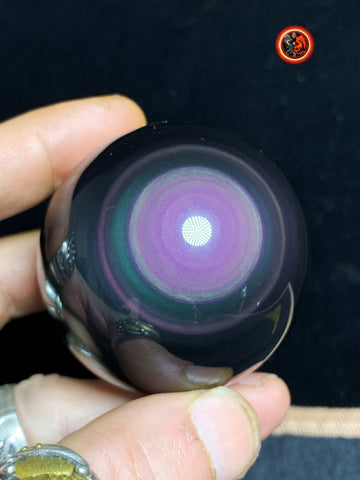
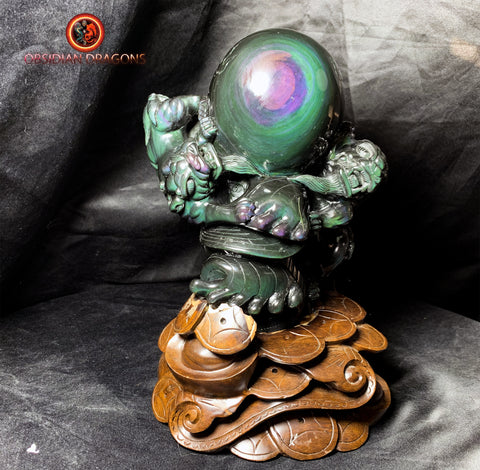
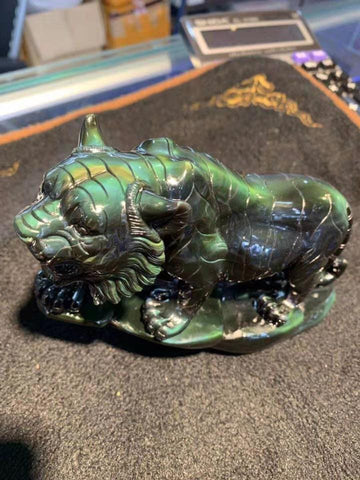
Ice Obsidian:
Pure obsidian without any inclusions or sprinkled with magnetites giving this translucent appearance.
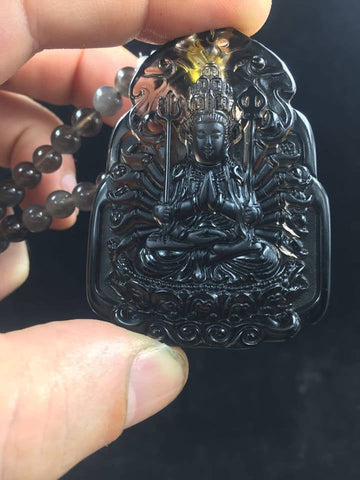
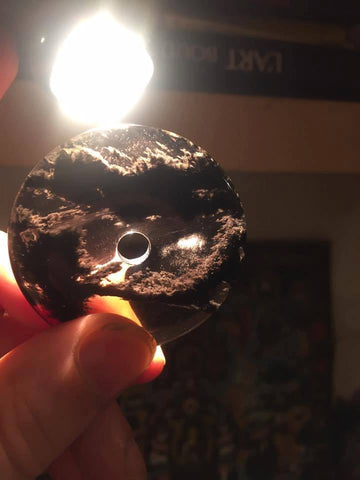
Use and supposed virtues in lithotherapy :
In general, obsidian would open to spirituality and would be protective
black obsidian would face its truths whether one is ready or not, it protects against negative energies and it relieves arthritis. Although it is a black stone it does not anchor, on the contrary, it is a stone that opens to the invisible world.
snowflake obsidian of snow would help to distinguish between our material and spiritual life.
Apache tear obsidian would help to unlock what prevents us from communicating, it dispels victim attitudes where the person thinks the world is against them.
celestial eye obsidian also called rainbow obsidian of powerful connection with the divine, strongly favoring extrasensory abilities.
golden obsidian would promote the expression of our spirituality in matter and in our relationships.
silver obsidian would bring purity and humility, it also makes more sensitive favoring intuition.
mahogany obsidian also called Mahogany, would bring the sense of responsibility, making more lucid and bringing back to reality.
mentogochol obsidian would promote the connection with the higher planes of consciousness it is generally used in shamanism.
obsidian spider would help to rebuild oneself by breaking the negative links with the past.




























2 comments
Un super article passionnant merci pour ce partage 🙂
J’ai une obsidienne noire venant du Mexique est il possible de faire graver le AUM es ce compatible ?